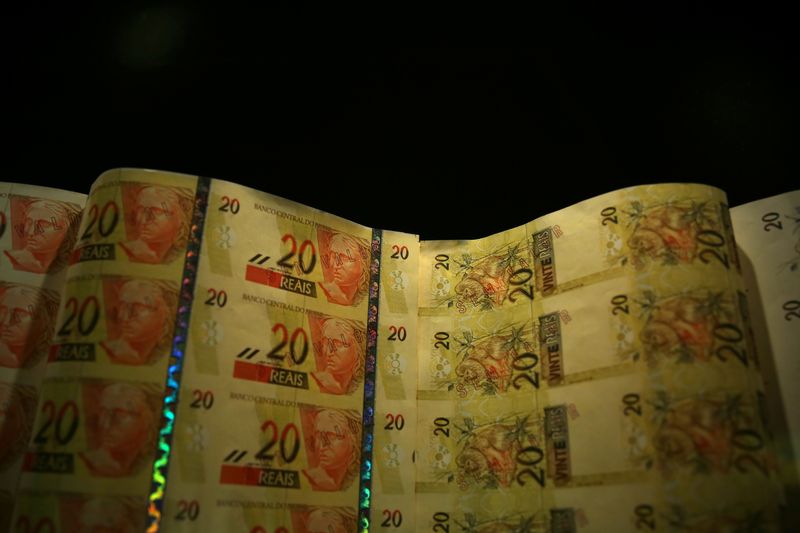By Gabriel Burin
BUENOS AIRES (Reuters) – Brazil’s real will continue to be restrained by worries about the fiscal situation in the near future despite an expected boost from a widely anticipated first interest rate cut by the U.S. Federal Reserve later this month, a Reuters poll showed.
The currency has traded weaker since June due to mounting concerns over the budget deficit, which has kept worsening and exceeded 10% of gross domestic product in the 12 months through July.
Numeric estimates in the survey for the real were optimistic but responses to extra questions painted a more cautious picture.
The currency was expected to gain 7.2% in 12 months to 5.27 per U.S. dollar against 5.65 on Tuesday, according to the median estimate of 26 foreign exchange strategists polled Aug. 30-Sept. 4.
However a slim majority – seven of 13 – who answered an extra question on the risks to their estimates said they were skewed towards a weaker real. The other six were divided between four who saw the greater risk being to the upside, and two with a neutral stance.
“The real continues under pressure due mainly to a challenging fiscal scenario, with a significant rise in spending and an adjustment based only on revenue growth,” said Flavio Serrano, chief economist at Banco BMG.
“If there is greater commitment to fiscal targets, we may see some correction (strengthening) of the real. The beginning of a monetary policy easing process in the United States could also support this movement.”
The outlook for the Mexican peso was also mixed. Although it was seen advancing 3.7% in 12 months to 19.08 per dollar, seven of 10 respondents to the extra question viewed risks more tilted to the downside, two as neutral, and one to the upside.
It has been on the back foot since the government recently launched a judicial reform that investors fear could hurt business interests. On Wednesday, the lower house of Congress approved the initiative.
In Argentina, while the consensus forecast in one year pointed at a 36.5% depreciation of the peso to 1,500 per dollar, some economists said it may actually fare better than expected, after confounding pessimistic calls earlier this year.
“The current crawling peg scheme for the peso will likely be sustained at least until the end of 2024, but this will become harder next year without new government funding,” said Federico Zirulnik, economist at CESO.
So far this year, the Brazilian real is down 14.2% and the Mexican peso has lost 14.3%. The Argentine currency has depreciated 15.2% due to a tight central bank scheme that includes a preset 2% monthly devaluation rate.
(Other stories from the September Reuters foreign exchange poll)
(Reporting and polling by Gabriel Burin in Buenos Aires; additional polling by Purujit Arun, Pranoy Krishna and Rahul Trivedi in Bengaluru; Editing by Ross Finley and Jan Harvey)
